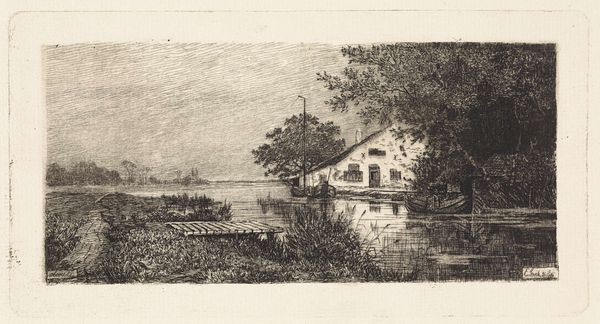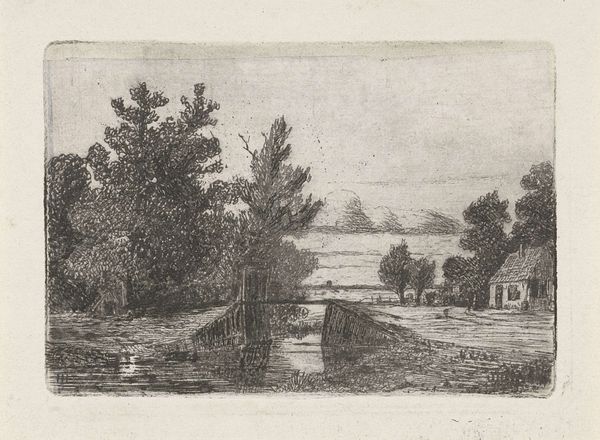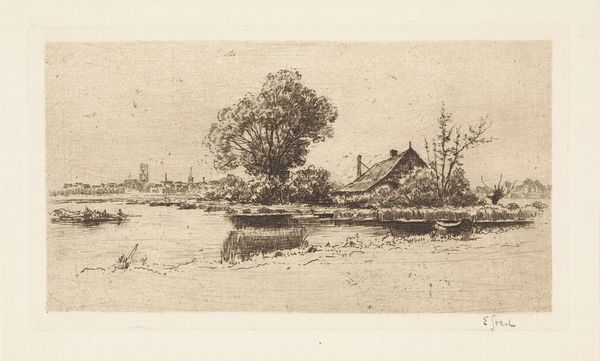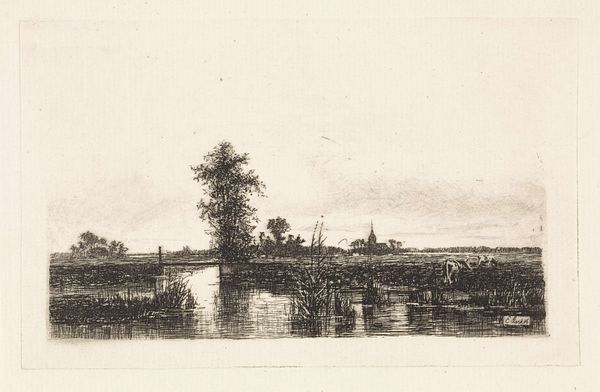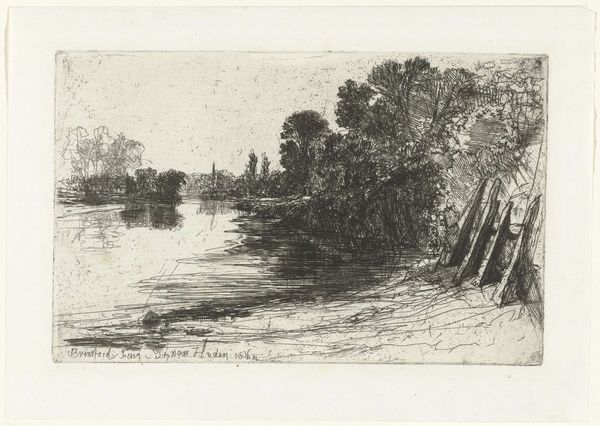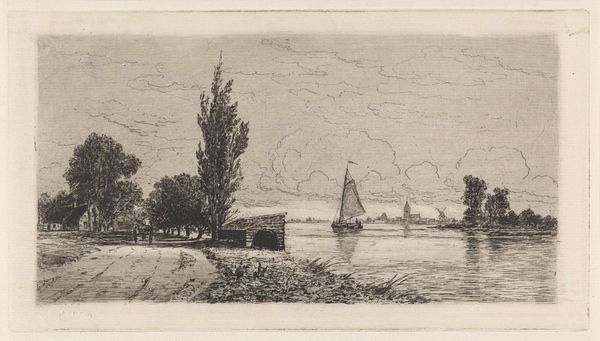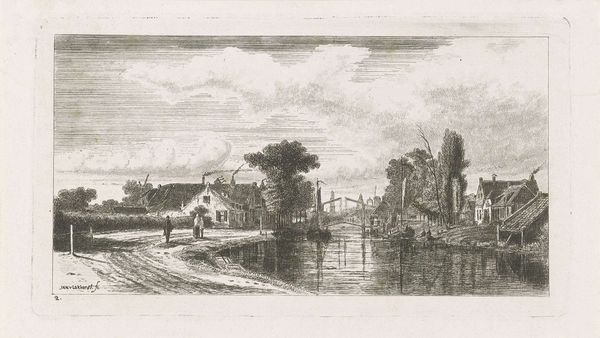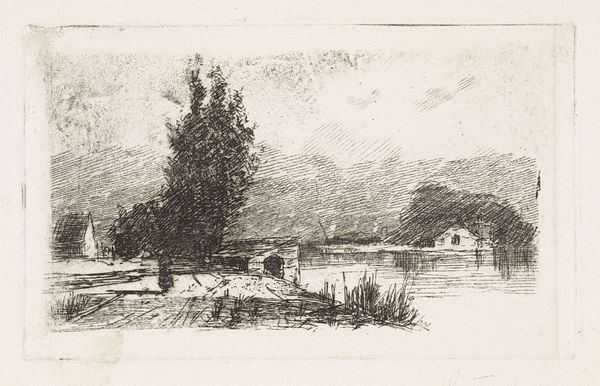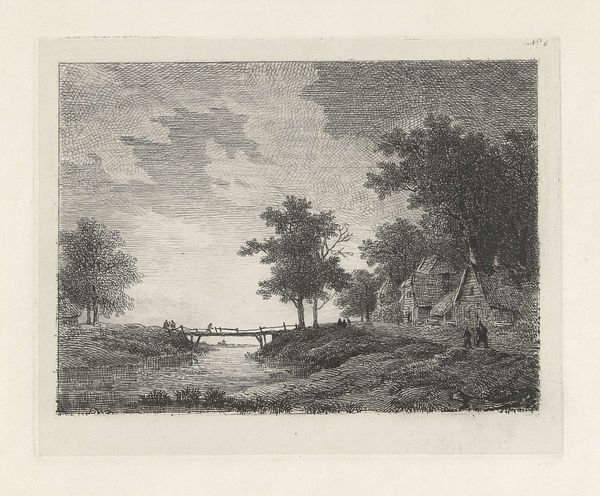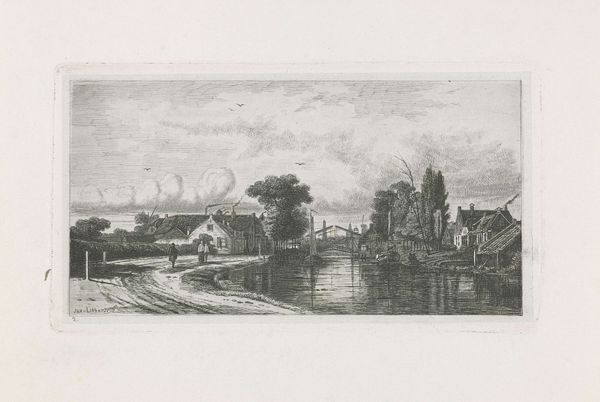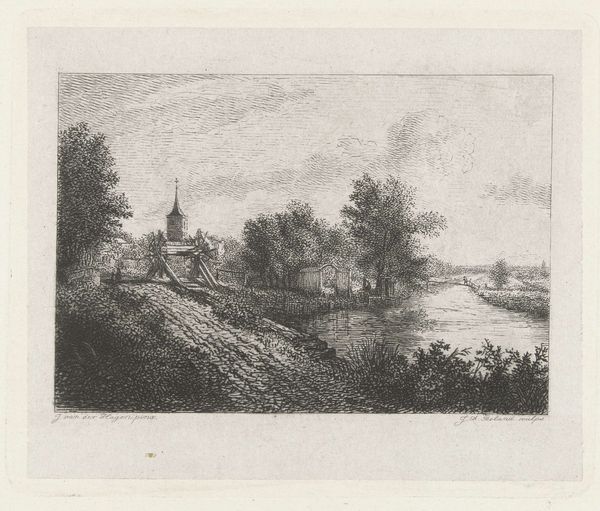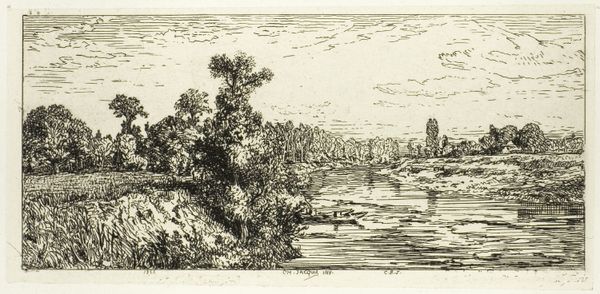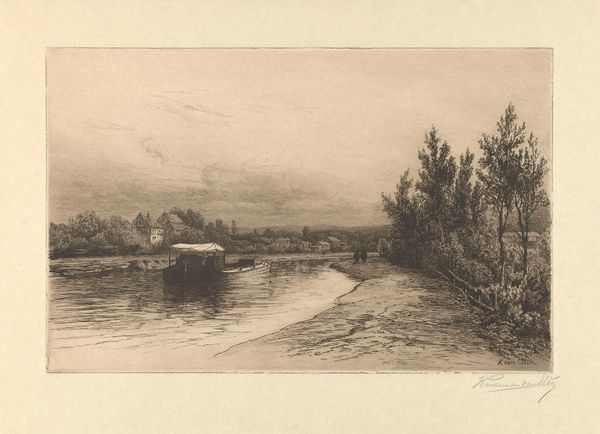
print, etching
#
dutch-golden-age
# print
#
etching
#
landscape
#
realism
Dimensions: height 85 mm, width 198 mm
Copyright: Rijks Museum: Open Domain
Jacobus Ludovicus Cornet created this print of a river scene, using etching, a technique with a rich history. In etching, a metal plate, often copper, is coated with a waxy, acid-resistant substance called a ground. The artist then draws through this ground with a needle, exposing the metal beneath. The plate is immersed in acid, which bites into the exposed lines, creating grooves. Ink is applied to the plate, filling these grooves, and the surface is wiped clean. Finally, the plate is pressed onto paper, transferring the ink and creating the print. The linear quality and fine detail you see here are characteristic of etching, and this method allowed Cornet to capture the tranquil mood of the river landscape. Etching was crucial to the democratization of art, making images widely available and playing a vital role in spreading knowledge and ideas in Cornet’s time. By valuing the craft involved, we can understand how prints like this one engaged with a broader public.
Comments
No comments
Be the first to comment and join the conversation on the ultimate creative platform.
